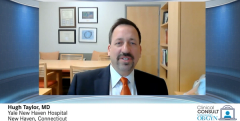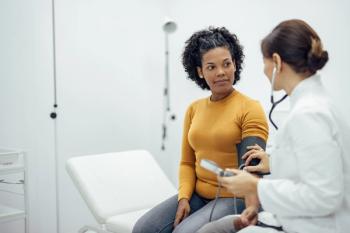
Evolution of Care for Endometriosis
Robert N. Taylor, MD, PhD, reviews first- and second-line therapies for the treatment of endometriosis.
Episodes in this series

Robert N. Taylor, MD, PhD: Hello, my name is Dr Rob Taylor. I’m a reproductive endocrinologist and professor of obstetrics and gynecology at the University of Buffalo. It’s my pleasure to conduct this program entitled, “Clinical Consult: Updates in the Management of Endometriosis.” I appreciate the invitation from Contemporary OB/GYN® to participate in this symposium. It’s my pleasure to talk with you today about the progress that we’ve made in the field of endometriosis, what kind of new therapies are on the horizon, and what are some of the gaps in care of this interesting disorder.
The treatment landscape has evolved a lot over the years, and we’re going to talk about various approaches to therapy based on that evolution. I’d like to start with some of the first-line therapies, and those would include nonsteroidal anti-inflammatory drugs [NSAIDS], and probably combined oral contraceptive agents. Those are ones that I consider the first-line treatments. The NSAIDs, as you’re aware, are inexpensive, generally well tolerated, although we do know that a number of women will complain of gastrointestinal adverse effects with NSAIDs. We’ve had them available for many, many years. Unfortunately, the quality of the clinical trials that have been done looking at NSAIDs and endometriosis pain have not been of very good quality. But given all of the experience we have with these drugs; we still consider them the first-line treatment. In my practice as a tertiary care reproductive endocrinologist, almost everybody who comes to see me has already had a trial of this sort of therapy. We hope that many primary care practitioners, pediatricians, general internal medicine people have tried this for women with symptoms of endometriosis as well. But they can be very effective, and again as I said, that should really be a first choice, in young women in particular.
Next, would be the role of the combined oral contraceptive in the treatment of endometriosis, and for this I like to think about these as being predominantly progestational agents. It’s a convenient formulation and relatively inexpensive that comes as oral contraceptives. Ideally in a disorder like endometriosis, where we believe it’s an estrogen-driven kind of a biology of the progression of the lesions and activation of pain symptoms associated with that, adding estrogen to that situation tends to make it worse. But in the formulation of a birth control pill, which has predominantly progestational steroids in it, that has been quite an effective treatment. We also use progestins alone, norethindrone acetate and depot medroxyprogesterone acetate have been used, and in fact are FDA approved. I should point out that oral contraceptives are not FDA-approved drugs for the treatment of endometriosis, but again, being a convenient formulation, we use them quite regularly. The other point that I’d like to make about oral contraceptives is that when they’re used continuously rather than cyclically—so there are no withdrawal periods during that placebo week, we just ask women to avoid taking the placebo pills—the efficacy for pain treatment is actually quite a bit higher. Thus, continuous oral contraceptives are probably the best therapies there.
The second-line therapies, and as I’ve mentioned, formally FDA approved therapies for endometriosis include danazol, which is kind of an old and not so popular medication any longer. Danazol has some interesting chemistry, the chemical structure, it is a…derivative of 19-nortestosterone. And 19-nortestosterone is the steroid that all of the oral contraceptive progestins are based on, or most of them. This is predominantly a very androgenic, progestational kind of a drug. It was found to be quite efficacious in the 1970s when it was first introduced, and many of us used this for many years. The adverse effect profile, which includes weight gain, acne, a variety of adverse effects that are reflected in the androgenicity of that steroid hormone, are the biggest drawback. Over the years it’s kind of lost popularity. But I mention it today because there are some studies that are being done looking at local treatment with danazol, either vaginally or delivered through an IUD [intrauterine device], and in that case the systemic adverse effect profile seems to be much better. There are groups in Japan and in Italy that have tested some of these locally treated danazol approaches, and there might be a bit of a comeback for danazol if we can get around some of the systemic adverse effects. But again, these were quite unpopular with women who experienced weight gain, increased muscle mass, changes in voice, or pitch, as a result of the androgen. Thus, they did have a significant adverse effect profile.
We talked a little about other progestins, I mentioned depot medroxyprogesterone acetate and norethindrone acetate. Those have been used quite effectively for the treatment of endometriosis pain. But we have noticed, and this is also true with the oral contraceptive treatment, that there are probably close to 20% to 30% of women with endometriosis for whom these progestational agents aren’t very effective for the relief of their pain. Hence, there’s a reasonably high failure rate of these progestins, which is one of the things that’s led to our interest and excitement about how the landscape is changing with the new kinds of medications that have been developed.
Transcript Edited for Clarity
Newsletter
Get the latest clinical updates, case studies, and expert commentary in obstetric and gynecologic care. Sign up now to stay informed.












